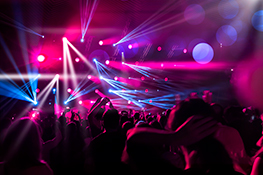The Art of Stage Lighting: Create Stunning Visual Narratives
Introduction: Illuminating the Story
Stage lighting is more than just illuminating a stage; it’s a powerful storytelling tool. It shapes mood, directs attention, and enhances the emotional impact of a performance. Mastering the art of stage lighting allows you to create stunning visual narratives that captivate your audience and elevate the theatrical experience. This article explores the key elements of effective stage lighting design, from fundamental techniques to advanced strategies, equipping you with the knowledge to craft breathtaking visuals.
Understanding the Fundamentals: Light, Color, and Shadow
The Power of Light Intensity
The intensity of light, controlled by dimmers, is crucial for establishing the emotional tone. Bright, intense light can convey excitement and energy, while subdued lighting creates a sense of mystery or intimacy. Careful manipulation of light intensity throughout a scene can build suspense, emphasize key moments, and guide the audience’s gaze.
Color Psychology in Lighting Design
Color is an incredibly powerful tool in stage lighting. Different colors evoke different emotions. Warm colors like red and orange can create feelings of warmth, passion, or danger, while cool colors like blue and green can convey calmness, sadness, or mystery. Using color strategically can profoundly impact the audience’s emotional response to the performance.
Harnessing the Magic of Shadow
Shadow is often overlooked but is just as important as light itself. Strategic use of shadow can create depth, mystery, and intrigue. It can also be used to highlight specific elements on stage, drawing the audience’s eye to crucial moments or characters. Mastering shadow manipulation is a key element of sophisticated lighting design.
Advanced Techniques: Shaping the Visual Narrative
Creating Atmosphere with Lighting Effects
Beyond basic illumination, a range of lighting effects significantly impact the visual narrative. Gobo patterns project images or textures onto the stage, enhancing the setting or creating symbolic imagery. Moving lights offer dynamic and captivating visual effects, following actors, highlighting objects, or creating dramatic shifts in the atmosphere.
Motivated Lighting vs. Non-Motivated Lighting
Understanding the distinction between motivated and non-motivated lighting is vital. Motivated lighting simulates realistic light sources within the scene (e.g., a lamp on a table), enhancing realism and believability. Non-motivated lighting is more abstract, prioritizing artistic expression and mood over literal representation. Effective lighting design often employs a blend of both techniques.
Working with Color Temperature and Gel Filters
Color temperature, measured in Kelvin (K), influences the warmth or coolness of the light. Warm light (lower K values) creates a cozy, intimate feel, while cool light (higher K values) feels more sterile or distant. Gel filters allow for precise color control, allowing you to fine-tune the mood and enhance the visual storytelling.
The Importance of Collaboration and Planning
Effective stage lighting isn’t a solo effort. Collaboration between the lighting designer, director, and other technical crew members is paramount. Careful planning, including thorough lighting plots and rehearsals, ensures the lighting design complements the overall production vision and enhances the storytelling.
Conclusion: Illuminating the Path to Success
Mastering the art of stage lighting requires understanding the interplay of light, color, shadow, and technology. By embracing these principles and techniques, lighting designers can transform a stage into a dynamic and expressive canvas, creating visual narratives that resonate with audiences and elevate the theatrical experience. Explore the possibilities, experiment with different approaches, and discover the limitless potential of stage lighting to enhance your storytelling. Contact Stagelights.in today to discover the tools and resources you need to illuminate your next production.


 Auditorium Construction Services
Auditorium Construction Services 